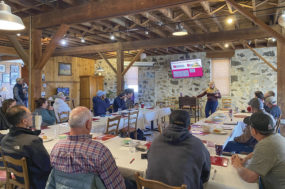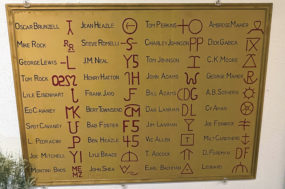I hope the first of October finds you doing well. It seems as though time continues to fly by faster and faster. You are probably right in the middle of your fall work, and yet spring work could very well be just around the corner.
Last month, we visited about the possibility of watching one or two technical studies to help in making your marketing decisions. Have you taken the time to look at a study or two? If not, that is OK, after all, you have about a hundred things going on every day and looking at a technical study probably isn’t in the top 10 or so things you need to accomplish. I want you to know I understand, so I will give a little update on what has happened between writing the September article and this article.
In the middle of July, the relative strength index (RSI) was at 36 with Chicago December wheat futures at $6.59, and we said that at a level around 30 the market could find some support. (Remember, this study isn’t an exact science.) Well, we did find support and the futures began to move higher. The December contract moved up to a high of $7.80 the last week of July with the RSI at 76. The market corrected and traded lower into the first week of August with the futures at $6.60 and the RSI at 33.
Last month, we talked about how this one simple study could be an asset to you when deciding whether or not to contract today or have a little patience and contract in a few days down the road. Watching a technical study could help, and it will only take you a few minutes to look at during the day.
I feel that it will be beneficial for us to look at your local supply/demand. The questions are: Where can we go to find just what is going on in the local market? Who needs my wheat? How badly do they need it? When can I deliver? The answer to all of these questions is simply, “Basis.” Where is the basis level? Is it strengthening or weakening? Is there a premium for delivery in a deferred month?
As with the technical studies in the futures, watching and trading the basis won’t be a layup. At the time I wrote this article, hard red winter (HRW) wheat in Blackfoot was bid at the same level as Portland, and the Ogden market was bid a 60-cent-per-bushel premium. Soft white in Portland was a 35-cent-per-bushel premium to Blackfoot, and Ogden was a 45-cent premium to Portland. Looking at these numbers, we need to ask ourselves where the local flour mills could go to buy wheat this year. How far out of the normal contracting area could they go and pull HRW wheat away from the Portland market? The same holds true for soft white into the Ogden market.
Remember, when the basis is strengthening the market needs to buy wheat. As soon as they cover their needs, the basis will begin to weaken. Don’t get caught up in thinking the basis has nowhere to go but higher because it can correct lower considerably faster than it strengthens.
Simply watching a few market indicators will benefit you in your marketing decisions. You will market your commodity based on what you know is taking place in the market. This will help you take the emotion out of your decision, thus helping you sleep at night knowing your decision was based on good sound marketing principles.
Don’t hesitate to call a professional at any time to discuss the markets and assist you in your marketing plan.
Until we visit again, have a great month ahead and be safe.





